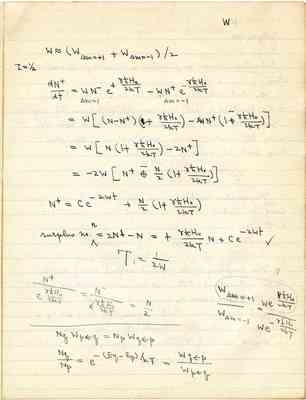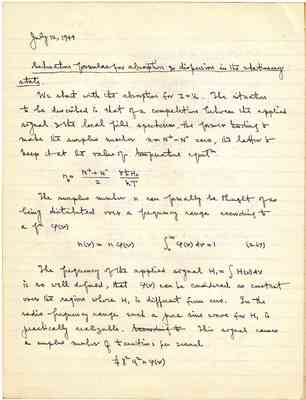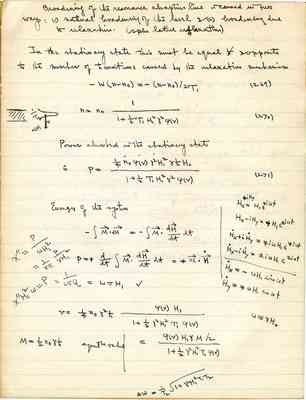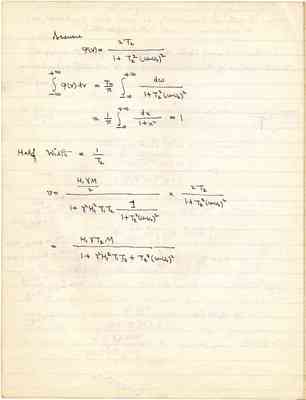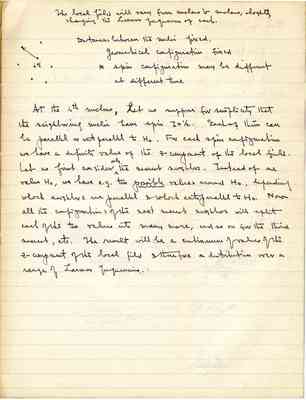Pages
27
This page is not transcribed, please help transcribe this page
28
July 12, 1949
Saturation formulas for absorption & dispersion in the stationary state
We start with the absorption for I=1/2. The situation to be described is that of a competition between the applied signal & the local field spectrum, the former tending to make the surplus number zero, the latter to keep it at the value of temperature equilm.
The surplus number n can formally be thought of as being distributed over a frequency range according to a fn φ(ν)
The frequency of the applied signal {tex: $H_1 = \int H(\nu)d\nu :tex}} is so well defined, that φ(ν) can be considered as constant over the region where H₁ is different from zero. In the radio frequency range such a pure sine wave for H₁ is practically realizable. According to This signal causes a surplus number of transitions per second
29
This page is not transcribed, please help transcribe this page
31
The local field will vary from nuclues to nucleus, slightly changing the Larmor frequencies of each.
[Diagram of 6 dots arrranged in a circle with one dot in the center labeled ith. An arrow is drawn from the central dot to the dot to its upper left.] Distances between the nuclei fixed. Geometrical configuration fixed * spin configuration may be different at different time.
At the ith nucleus, let us suppose for simplicity that the neighboring nuclei have spin I = 1/2. Each of them can be parallel or antiparallel to H0. For each spin configuration we have a definite value of the z-component of the local field. Let us first consider only the nearest neighbors. Instead of one value H0, we have e.g. ten possible values around H0, depending which neighbors are parallel & which antiparallel to H0. Now all the configurations of the next nearest neighbors will split each of the ten values into many more, and so on for the third nearest, etc. The result will be a continuum of values of the z-component of the local field & therefore a distribution over a range of Larmor frequencies.
